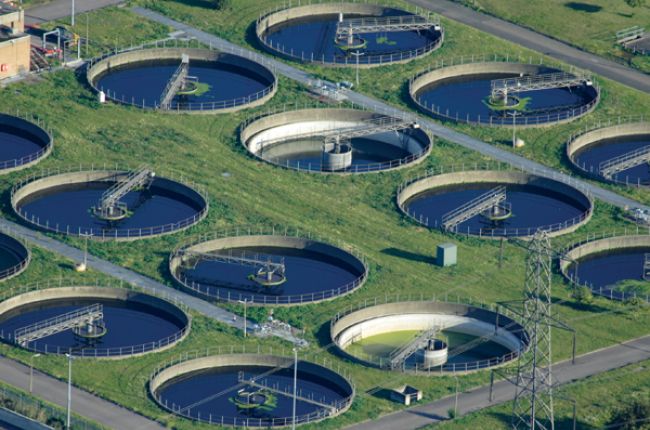Innovative Strategies to Waste Water Treatment Technologies
Innovative Strategies to Waste Water Treatment Technologies
Blog Article
Strategic Approaches to Enhance Drainage Treatment Effectiveness and Decrease Environmental Effect
In the world of waste water therapy, the quest for enhanced efficiency and minimized ecological effect is a continuous obstacle that requires strategic options. The combination of sophisticated treatment innovations, energy-efficient procedures, source recuperation strategies, enhanced nutrient elimination methods, and wise surveillance and control systems represents a complex framework for dealing with these pushing problems.
Advanced Treatment Technologies
Sophisticated membrane layer filtration systems have actually transformed sophisticated wastewater therapy procedures, considerably enhancing the removal of pollutants. This technology has actually shown to be highly efficient in removing a wide array of pollutants, consisting of drugs, hefty steels, and natural substances, which are typically challenging to eliminate via traditional therapy approaches.
Additionally, membrane layer filtering systems supply countless benefits over traditional therapy strategies. They call for less room, produce higher-quality effluent, and are extra resistant to changes in influent water high quality. Furthermore, these systems are very versatile and can be easily incorporated right into existing treatment plants or made use of as standalone units for decentralized applications. As the demand for tidy water proceeds to increase, the fostering of innovative membrane filtering modern technologies is important to make sure sustainable and efficient wastewater therapy techniques.
Energy-Efficient Procedures
The assimilation of energy-efficient processes in wastewater therapy systems is important for optimizing resource application and lowering functional expenses. By applying energy-efficient innovations, treatment plants can dramatically lower their carbon impact and general environmental impact. One essential strategy to improving power performance in wastewater therapy is the application of innovative aeration systems, such as fine bubble diffusers or surface area aerators, which can boost oxygen transfer efficiency and decrease energy consumption. Additionally, incorporating energy healing systems, like anaerobic digestion for biogas production or making use of excess heat for thermal procedures, can help balance out energy requirements and promote sustainability.
Furthermore, maximizing process control and automation with the usage of innovative sensing units and keeping track of systems can improve overall energy efficiency by readjusting operations in real-time based on actual need and conditions. Implementing power audits and on a regular basis keeping an eye on energy performance indications are necessary techniques to recognize locations for enhancement and track energy-saving initiatives properly. In general, the fostering of energy-efficient processes in wastewater therapy not only profits the environment yet likewise contributes to long-lasting expense financial savings and operational sustainability.
Resource Recovery Approaches
With a concentrate on enhancing source usage and sustainability in wastewater treatment systems, the implementation of resource recovery methods becomes an essential facet in boosting functional efficiency. Source healing approaches in wastewater treatment include the identification and removal of useful sources from the waste stream, thus turning what was when thought about waste right into a useful asset. By carrying out resource recuperation strategies such as nutrient removal and recuperation, energy generation from raw material, and the production of multiple-use water, wastewater therapy plants can lessen environmental impact while taking full advantage of efficiency.

Boosted Nutrient Removal Methods
Executing advanced nutrient removal strategies is crucial for enhancing the performance of wastewater treatment systems. Boosted nutrient removal plays an important function in minimizing the ecological effect of cured effluent released right into water bodies. Among the vital techniques made use of for improved nutrient removal is the procedure of organic nutrient removal (BNR), which involves the elimination of nitrogen and phosphorus via organic procedures. This can be accomplished with making use of specialized bacteria that can convert nitrogen compounds into inert nitrogen gas through denitrification, and gather phosphorus within their cells via a procedure called boosted biological phosphorus removal (EBPR)

In enhancement to BNR, advanced therapy approaches such as membrane bioreactors (MBRs) and constructed wetlands can also be employed to boost nutrient removal performance. MBRs utilize membrane layers to achieve top quality effluent standards by successfully removing nutrients and put on hold solids. Created wetlands mimic natural marsh procedures to get rid of nutrients via plant uptake, microbial activity, and sedimentation. By integrating redirected here these sophisticated nutrient elimination techniques into wastewater treatment towns, markets and systems can properly lower nutrient contamination and safeguard the setting.
Smart Monitoring and Control Systems
Using sophisticated innovation, the assimilation of wise monitoring and control systems changes the functional efficiency of wastewater treatment facilities. These systems include sophisticated sensors site web and information analytics to continuously keep track of essential criteria such as pH levels, turbidity, dissolved oxygen, and circulation prices in real-time. By accumulating and analyzing this information, operators can gain beneficial understandings into the efficiency of the therapy procedures, enabling positive changes to maximize therapy efficiency.
Smart tracking and control systems likewise support remote monitoring capacities, permitting operators to gain access to real-time information and control features from off-site places. This remote accessibility enhances functional adaptability and responsiveness, allowing speedy treatments in situation of system malfunctions or fluctuations in influent quality. Furthermore, the predictive maintenance abilities of these systems help stop devices failures and decrease downtime, inevitably boosting the overall reliability of wastewater therapy procedures (Waste Water Treatment).
Conclusion
Finally, strategic approaches such as sophisticated therapy technologies, energy-efficient procedures, source recovery strategies, boosted nutrient elimination strategies, and clever monitoring and control systems play an essential duty in improving wastewater treatment effectiveness and decreasing environmental effect. By carrying out these methods, wastewater therapy plants can improve their total efficiency, decrease power intake, recover useful sources, and make certain conformity with ecological regulations. These approaches are essential for reliable and sustainable wastewater management techniques.

In conclusion, calculated methods such as sophisticated treatment modern technologies, energy-efficient procedures, source healing approaches, improved nutrient removal techniques, and smart monitoring and control systems play a critical role in enhancing wastewater therapy effectiveness and minimizing ecological influence.
Report this page